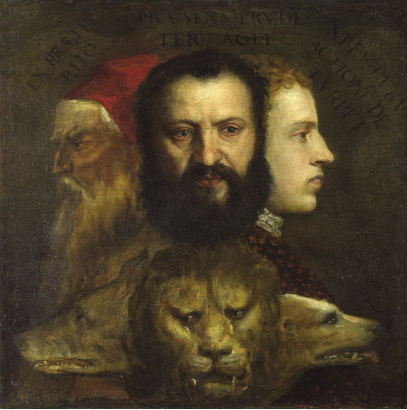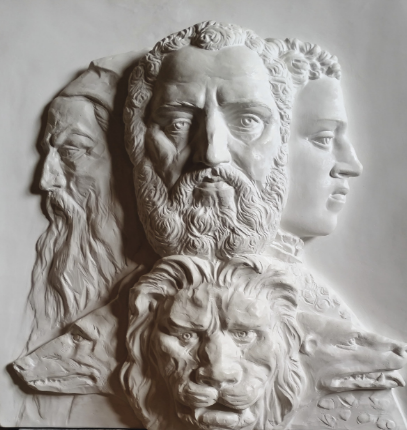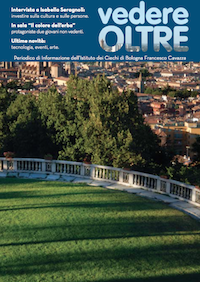There is a painting about the age of man by Titian. It is now kept at the National Gallery in London. It presents a complex allegorical construction. It can be found in the bas-relief collection of the Tactile Museum Anteros, in the form of a three-dimensional translation of the painting designed for the blind and visually impaired. The Allegory of Prudence is an emblematic work and, as explained by Erwin Panofsky and Fritz Saxl in an iconological essay of 1926, it is "A philosophical adage illustrated by means of a visual image rather than a visual image charged with philosophical connotations." In the painting, the conceptual meaning is impenetrable at first glance. It has all the characteristics of the emblem since it is involved in the nature of the symbol. But it is universal rather than particular. It has something of the riddle, but it is not so difficult. It is an aphorism, of a visual nature rather than verbal. And it has the character of a proverb, literate rather than common. This is also the only painting by Titian in which appears a true motto or titulus which in Latin says: EX PRAETERITO PRAESENS PRVDENTER AGIT NI FVTVRA ACTIONE DETURPET. It means: “From [the experience of] the past, the present acts prudently, lest it spoils future actions.”
The elements of this inscription, in three parts, are arranged at the top of the composition, and are consistent with the three pairs of human faces and animal heads representing respectively the past, the present and the future. The three levels of time are then subordinate to the moral moment generated by the condition of Prudence, one of the four cardinal virtues, combining memory, intelligence and foresight.

The representation of three ages of man in three human faces, youth, middle age and old age, expresses the concept of time. Even if we wanted to read the works of art from right to left, according to a linear time frame, we would soon realize that, to be penetrated in its symbolic meaning, it is necessary to read it from left to right and in relationship to the Latin inscription. The reference to the triple-headed image composed of a dog, a lion and a wolf, is linked to the same concept of temporality. It historically derives from the attribute anciently ascribed to the god Serapis, the Egyptian equivalent of the Greek god Apollo: symbol of strength and cosmic cyclical pattern. Originally, the image of the three-headed monster also included the presence of a snake that was wrapped in the coils of the three animals representing the cyclical nature of time. Starting from the left, in relationship with a self-portrait of the elderly Titian, there appears a wolf; at the centre, underneath the son Orazio's face, we see a lion, and finally on the right, in line with the portrait of Titian's young nephew, Marco, we see the muzzle of a dog. Titian portrays himself with dark tones, almost monochrome, brittled and thin brushstrokes. His face is carved out by age and presents sharp features returning ideally to the wolf's snout, whose profile and edges seem to merge with the dark background. It is a colour of diluted oil paint, applied with rapid strokes, metaphor of a countenance that heralds physical extinction.
The lion's head is almost anthropomorphic, the look of the feline mirroring in fact that of Horace and turning in the direction of the observer.
Here the painting becomes substantial. Finally, there is the docile and confident dog associated with Marco. The animal's mildness seems to agree with the sweetness and beauty of the regular features of the young nephew. Light floods his profile and transfigures him. We could say that the future is thus predicted and imagined fruitful.
And as the voracious wolf representing the past consuming and leading memories to oblivion, blurring them, the lion is presented as a sign of affirmative and vigorous strength of the present, while the dog represents hope and expectation in the future bounding forward.

It must be said that Titian realized this intellectual and painting masterpiece for private purposes, perhaps to adorn a small room in which he kept important documents and valuables collected in an active life and full of distinctions.
What is even more significant is to discover that the artist celebrated in this manner his idea of a legacy: material as well as spiritual. It is his legacy to his heirs, but also a message for posterity. Something that still fascinates the observer today, stimulates children's imagination and leads all of us to reflect on the idea of trans-generation continuity and on what we can build and leave to those who will be there after our passing.





.png)